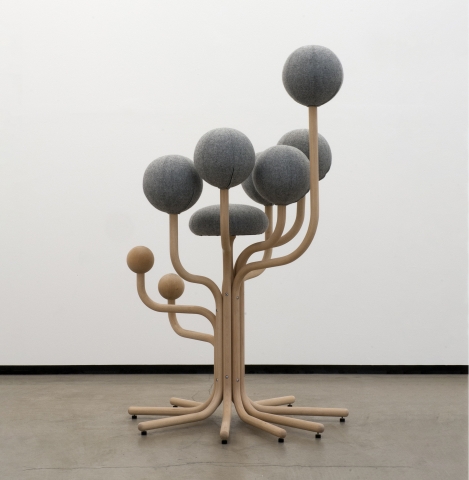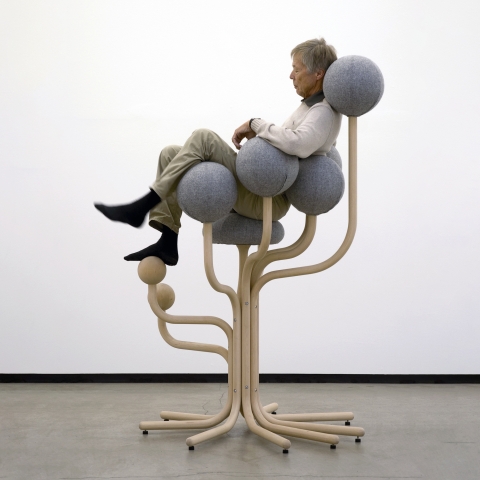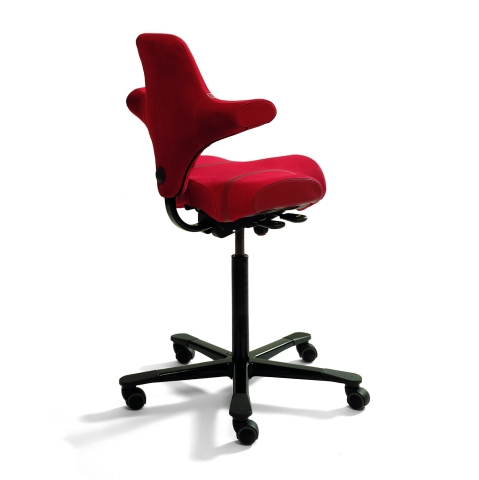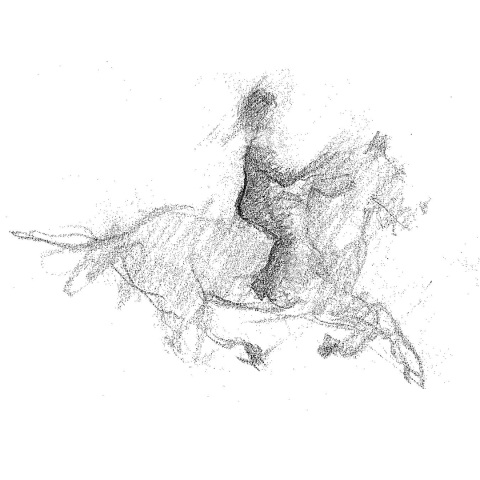In the modern world we lead passive lives in so many ways, and technological aids are taking over much of the natural physical activity we have had throughout history. The more passive our lifestyle is, the more important it becomes to listen when the body wants change.
After roughly half an hour in the cinema, our bodies start to tell us that it is time to change position. But both the chairs and social norms tell us to do the opposite, maintain roughly the same position.
But if it is few people in the cinema, the darkness make it easier to break social norms. Several of us might therefor sit like this:
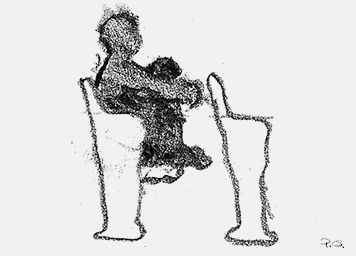
If we are allowed to move, we move
All civilizations have norms of conduct, and these also apply to bodily postures and movement. That is why we are better at listening to our bodily impulses in informal settings than on formal occasions, and use a greater variety of postures in private spaces than in public spaces. The impulses to change posture and move reflects the body’s needs (in order to function optimally). If we listened to more of these impulses and followed them to a greater extent, we would move more freely and use postures that are more natural to us. As long as you are not causing harm and distress to anyone in your immediate surroundings, surely it is worth trying to follow the advice your body gives you.
In addition to the social norms of sitting still and sitting nicely, the various authorities in Ergonomics were for many decades focusing on the sitting postures that demanded as little effort as possible to maintain and were as «relaxed” as possible. They discussed what was the optimal sitting position. Granjean described a semi-reclined position as the correct one, while Mandal and others sustained that the forward, more active position was the optimal posture.
The best sitting posture is, after a while, always the next
When the various authorities in ergonomics were all promoting their one and only “correct” sitting posture, my comment was that all of them were right!
All of the recommended sitting postures were good, and I saw it as my job to design chairs that allowed as many different comfortable postures as possible and to make it easy to move and change frequently between them.
The best sitting posture is, after a while, always the next.
That’s why, from the beginning of the 1980’s I have tried to break the stereotypical conception of proper sitting posture. To get this message across I created a number of products or objects whose attention-getting impact was more important than their utility. Their purpose was to gain acceptance for movement and variation of sitting postures, as this, in the end, is the most comfortable.»
Movement and variation of posture

Which arm will get tired first?
If standing still were the most comfortable position, people waiting for a train would look like statues. But they don't, they choose movement. Whenever we can, we simply prefer to move. The movements may be miniscule, such as a slight swaying from foot to foot, or we may choose to pace back and forth.
This preference for movement also applies when we are sitting.
Even the most comfortable position in the most comfortable bed becomes uncomfortable after a while. Have you ever woken up with your arms around your partner? After just a few minutes in a seat on an aeroplane or train or in the cinema, we start trying to find variation and new postures.
Perfect support for our bodies in the same posture is not the key to comfort. We are happy when we can switch between different positions, and it is unnatural for us to stay put in the same position for any length of time. Similarly, varied tasks are better for us than repeating the same operation over and over again.
This general human need for variety also applies when we are sitting. Although, of course, some bodily postures are more natural for us than others, it is pointless to ask what the best posture for our bodies or the best way of sitting is. Having held any posture for a while, the best posture is always the next one. Even the most “correct” way of sitting recommended by the most prominent experts becomes uncomfortable after a while.
The opposite of variety is monotony. In every sense, physical and mental, literal and figurative, variety is positive and monotony is negative.
Chairs and furniture inviting to movement and variation
There are at least two possible solutions to the challenges of our static and passive lifestyle:
1. To spend less time in a sitting position
2. To move and to vary our postures while sitting
Although the first solution is clearly preferable, it is only the second one that I have any capacity to influence in my profession as a developer of chairs and sitting devices.
One important solution I have developed to provide us with movement and variation of postures is the balanced tilt.
· A chair where tilting of the chair body (seat and back of the chair are joined) is controlled by how the sitter move and place their feet and legs. This front of the seat moves up when the legs put little pressure on the seat front and down when the person lean forward and more pressure is on the seat front. Thus the position of the feet controls the tilt angle of the chair.
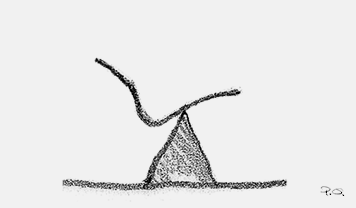
Why?
· Because our feet and legs have the main responsibility for moving us in almost all situations. It therefore seemed only natural to him to make tilting concepts that enable the feet to continue to perform this task also while we are sitting in a chair. Our legs are our experts in movement.
How?
· Being well balanced is a prerequisite for effortless movement. Being in balance provides control and inspires movement, also when sitting.
The user is inspire to tilt freely from a forward-leaning position to a reclined position by tilting over a pivot point or axis under the seat right at the body's very centre of gravity. And free to sit still in any of the positions in between, when that feels best
Control
· Riders must be among the earliest long-term sitters and they always sit with a good posture and a well balanced upper body. The stirrup ensured good (foot) control whilst moving with the horse. The feet are experts on moving us also when we sit.
Support or freedom - of movement?
Another misunderstanding when it comes to chairs and sitting; is too much focus on support. Many believe that if only they are well supported they may keep one posture forever.
Try to imagine that you are caught in an avalanche and are buried in snow. The position you assume may be comfortable – your entire body is perfectly supported in every way, but how long will this remain comfortable? The mere idea of our arms and legs being stuck in one position is unbearable. Being forced to stay put in one posture is a recognized means of torture.
Another way of inspiring more variation of sitting postures is to make cut-out spaces for arms and legs which gives the user freedom to vary his or her posture. This is best seen in the Capisco chair where the form of the seat and the backrest allow for multiple postures, including high and low sitting. An important advantage is therefore that the chair can be used with practically any of the table heights offered by adjustable desks.
Alternating between sitting high and sitting low during the workday provides a welcome variation. When leaning forwards, we feel most comfortable sitting fairly high up, but when leaning back, it is nice to sit low and put the feet up. When leaning forwards we get no support from the backrest, so why not sit on the chair back-to-front using the back support as a chest support? Sitting sideways is another comfortable sitting position we often choose in more relaxed settings.
The inspiration for “The saddle chair” was a horseback rider’s dynamic posture. The goal however was to create a sitting device or work chair that would invite the user to assume the greatest number of sitting postures possible.
Breaking the norms of sitting
In designing seating furniture, I have tried to make it possible for many different sitting postures to be adopted, and some of these may perhaps break with accepted cultural norms or ergonomics advices. My wish is that we should let the body dictate and forget about the norms.
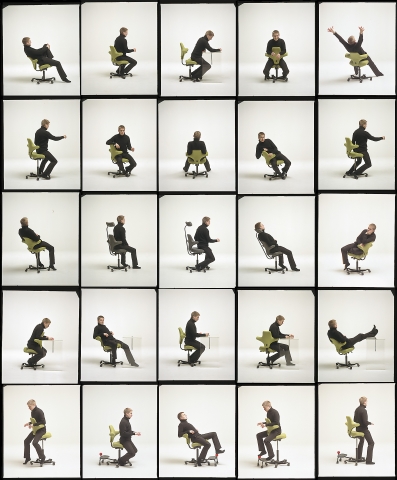
Read more about Peters thoughts about sitting:
A historical view on sitting
Movement and variation
Tilting – four concepts
Favourite postures
Chairs growing with the child
Some thoughts on design
Environmental values
Rethinking sitting – the book

